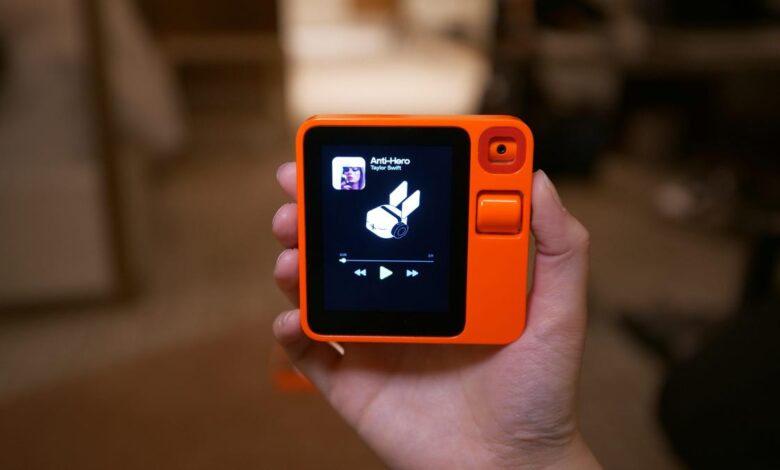From AI to Mixed Reality, CES 2024 Products Imagine a World Beyond Mobile Apps

It’s pretty easy to use your smartphone to order takeout food, play music, watch videos or schedule a ride share, but what if you didn’t have to unlock your phone (or even pick it up) to do any of those things? At CES 2024, tech giants and small startups provided a look at what the world might look like if you could video chat or book a vacation without touching your smartphone at all.
From putting voice assistants fueled by the tech behind ChatGPT in your pocket and car to mixed reality headsets that position virtual screens all around you, CES 2024 was full of ideas about how apps as we currently know them could evolve.
Read more: Best of Show: Our Most Exciting, Innovative and Impactful Tech Winners of CES 2024
It’s an ambition that’s been in motion for the better part of the last decade following the debut of voice-first gadgets like the Amazon Echo and early modern VR headsets such as the Oculus Rift. There’s renewed interest around these ideas heading into 2024, thanks to the boom in generative AI-powered assistants like ChatGPT and Apple’s entry into the mixed reality market. That sentiment was on full display during CES.
Smarter voice assistants that can do more
VW’s is bringing ChatGPT behind the wheel.
Amazon’s Alexa, Apple’s Siri and Google Assistant have existed for years, and ChatGPT has been part of the cultural zeitgeist since it arrived in November 2022. At CES 2024, we saw new ways in which large language models — or AI models that have been trained on large amounts of data to better understand natural language — are being implemented into hardware. These advancements, should they live up to their promises, could potentially eliminate or reduce the need to use traditional apps as often.
The Rabbit R1 is the biggest example of this. This tiny, orange box-shaped device is about half the size of your smartphone, and its 2.88-inch display is considered miniscule by today’s smartphone standards. That’s because you’re not meant to browse apps and watch videos on that small screen. Instead, the R1 hopes to be a smarter virtual assistant than your phone since it foregoes apps in favor of AI.
Rather than running on a traditional operating system, the Rabbit R1 is powered by a large action model (LAM), an algorithm that learns how people navigate apps so that it can automate those processes for you, along with OpenAI’s GPT-4 large language model. Rabbit CEO and founder Jesse Lyu likens it to handing your phone to a friend to order takeout or book an Uber rather than doing it yourself.
Volkswagen, meanwhile, wants to make it easier to get information without having to use apps on your phone while on the road. In partnership with Cerence, Volkswagen is incorporating ChatGPT into the automaker’s voice assistant in certain electric vehicles.
That means it’ll be capable of answering more complex questions, possibly making it so that you don’t have to pull over to whip out your phone or have a passenger look up such queries. It would be a step beyond Volkwagen’s current voice assistant, named Ida, which can be used to set destinations or change the temperature using your voice, as my colleague Antuan Goodwin reports.
Mixed reality is having a moment
XReal’s Air 2 Ultra
Other companies are looking for ways to expand apps way beyond the confines of your phone’s tiny 6-inch screen. One such example comes from Chinese startup Xreal, which debuted a new pair of augmented reality glasses called the Air 2 Ultra at CES. Xreal is already known for making AR glasses that can simulate the experience of watching a large TV. Xreal’s newest pair of glasses include 3D environment sensors, enabling them to run 3D apps and track motion.
Xreal is currently courting developers into creating 3D apps and experiences for its glasses. In the meantime, the company’s CES demo provided a glimpse into what these apps may look like. Xreal’s new glasses can place virtual screens all around the room, with a music player floating to the left and a YouTube video to the right, for example. The contacts page for communicating with friends and family members conjures up a 3D avatar of the person once you select them. It’s a much different experience than just looking at a contact’s photo on your phone.
In perhaps another sign that apps as we know them may change, Sony announced a mixed reality headset at CES 2024 designed specifically with content creators in mind. The goal, according to Sony’s press release, is to provide developers and creators with tools for building 3D content. Whether the content built using Sony’s new headset lives on your phone, future smart glasses or elsewhere is yet to be determined, but it’ll surely look and feel much different than the flat apps we use today.
Apple’s Vision Pro
Companies like Xreal, TCL and Lenovo have been developing and promoting smart glasses for years. Such devices are now in the spotlight thanks to Apple’s Vision Pro, the company’s first head-mounted computer. It’s perhaps no coincidence that Apple announced retail availability for the Vision Pro during CES, just as companies like Xreal were drawing attention toward their own mixed reality eyewear.
The Vision Pro, which launches on Feb. 2, provides a much larger canvas for viewing iPhone and Mac apps by virtually placing them in your environment. Aside from just enlarging apps, though, Apple’s demonstration video shows how the Vision Pro will show 3D representations of icons and graphics that animate and fill your entire room for a more in-depth experience. It’s Apple’s biggest bet in years to move beyond the iPhone and the myriad apps that live on it.
Just like smartphones and tablets never wholly replaced laptops the way some had predicted, smarter voice-enabled chatbots and mixed reality experiences won’t make the apps on your phone obsolete. They may change their role and place in our lives.
The Rabbit R1 AI Assistant Looks Downright Retro in Orange
See all photos






